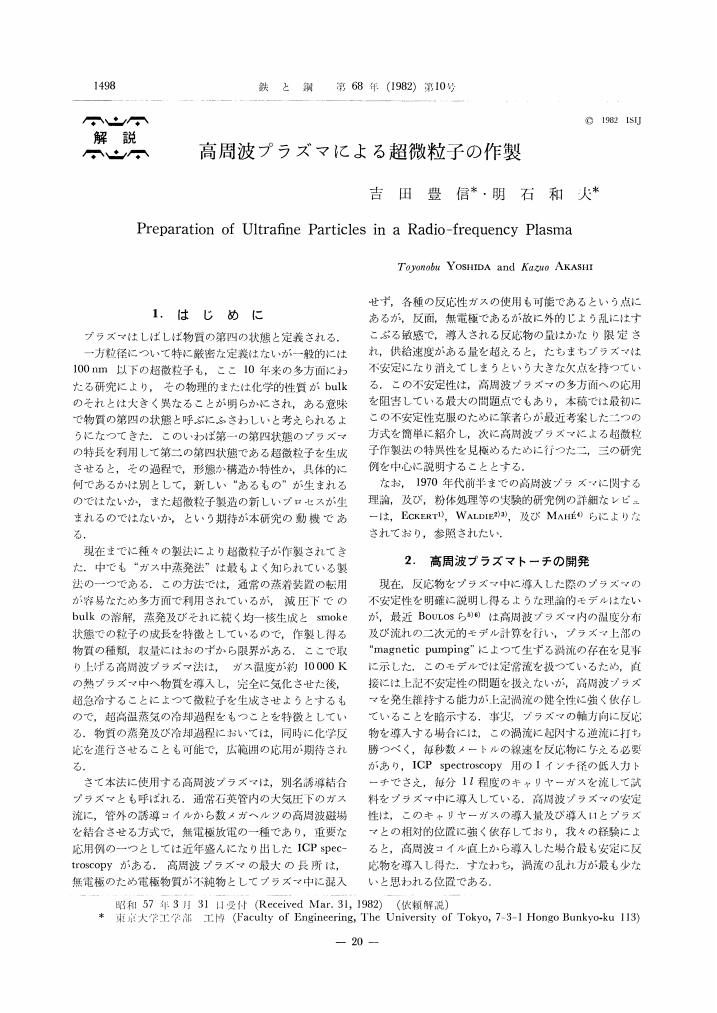1 0 0 0 OA 高周波プラズマによる超微粒子の作製
- 著者
- 吉田 豊信 明石 和夫
- 出版者
- The Iron and Steel Institute of Japan
- 雑誌
- 鉄と鋼 (ISSN:00211575)
- 巻号頁・発行日
- vol.68, no.10, pp.1498-1502, 1982-08-01 (Released:2009-06-19)
- 参考文献数
- 28
- 被引用文献数
- 2 4
1 0 0 0 OA 公務員の労働権
- 著者
- 吉田 豊信
- 出版者
- 日本行政学会
- 雑誌
- 行政研究叢書 (ISSN:2187039X)
- 巻号頁・発行日
- vol.1958, no.3, pp.123-132, 1958-04-07 (Released:2012-09-24)
- 著者
- 服部 伴之 山口 哲央 間嶋 俊雄 寺嶋 和夫 吉田 豊信
- 出版者
- 公益社団法人 日本金属学会
- 雑誌
- 日本金属学会誌 (ISSN:00214876)
- 巻号頁・発行日
- vol.63, no.1, pp.68-73, 1999
- 被引用文献数
- 3
Hot cluster epitaxy (HCE) is a novel high-rate epitaxial growth mechanism discovered in the study of the plasma flash evaporation method. In HCE, the main deposition species are thermally activated, nanometer-scale clusters (hot clusters), which have unique characteristics such as high internal energy and high sticking probability even at high substrate temperature. Actually, with HCE, deposition of YBa<SUB>2</SUB>Cu<SUB>3</SUB>O<SUB>7−<I>x</I></SUB> epitaxial films at a growth rate of 16 nm/s on the SrTiO<SUB>3</SUB> substrate has been achieved. However, films thicker than 2 μm could not be obtained so far. In this paper, we discuss the “charge-up” effect of clusters and insulating substrates in a plasma environment as a retarding factor for film growth. Probe measurements and the biasing deposition clarified the charge-up of clusters were charged up during deposition. It was found that more than 60% of the clusters were negatively charged. By using conductive substrates of Nb doped SrTiO<SUB>3</SUB>, or changing Ar composition in Ar-O<SUB>2</SUB> plasma, we could deposit monolayer-smooth epitaxial YBa<SUB>2</SUB>Cu<SUB>3</SUB>O<SUB>7−<I>x</I></SUB> films thicker than 3 μm, with excellent properties; the full width less than 0.14° at half maximum of the X-ray rocking curve of the (005) peak, and the superconducting transition temperature of 92 K. These results suggest the future role of HCE in epitaxial thick film deposition.

